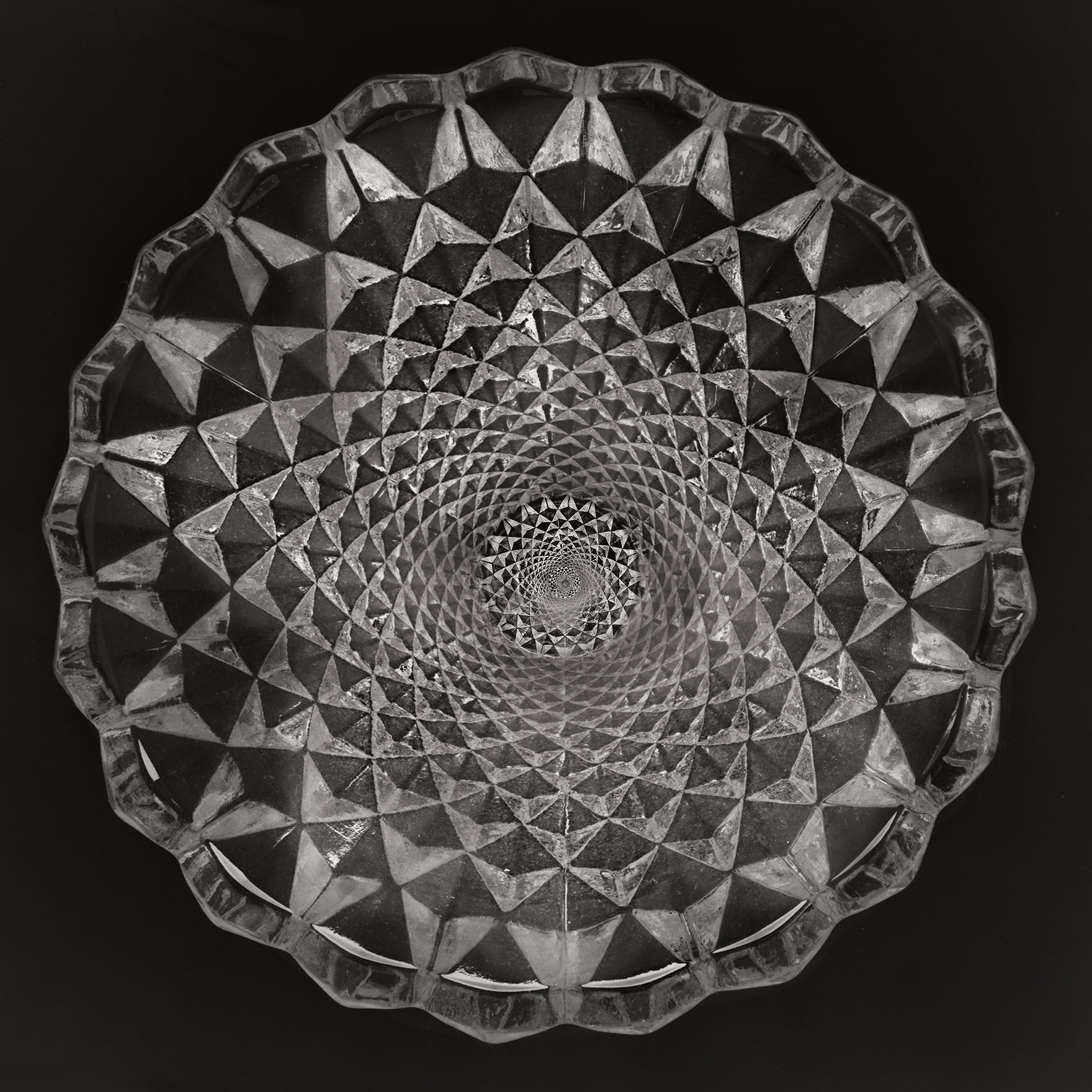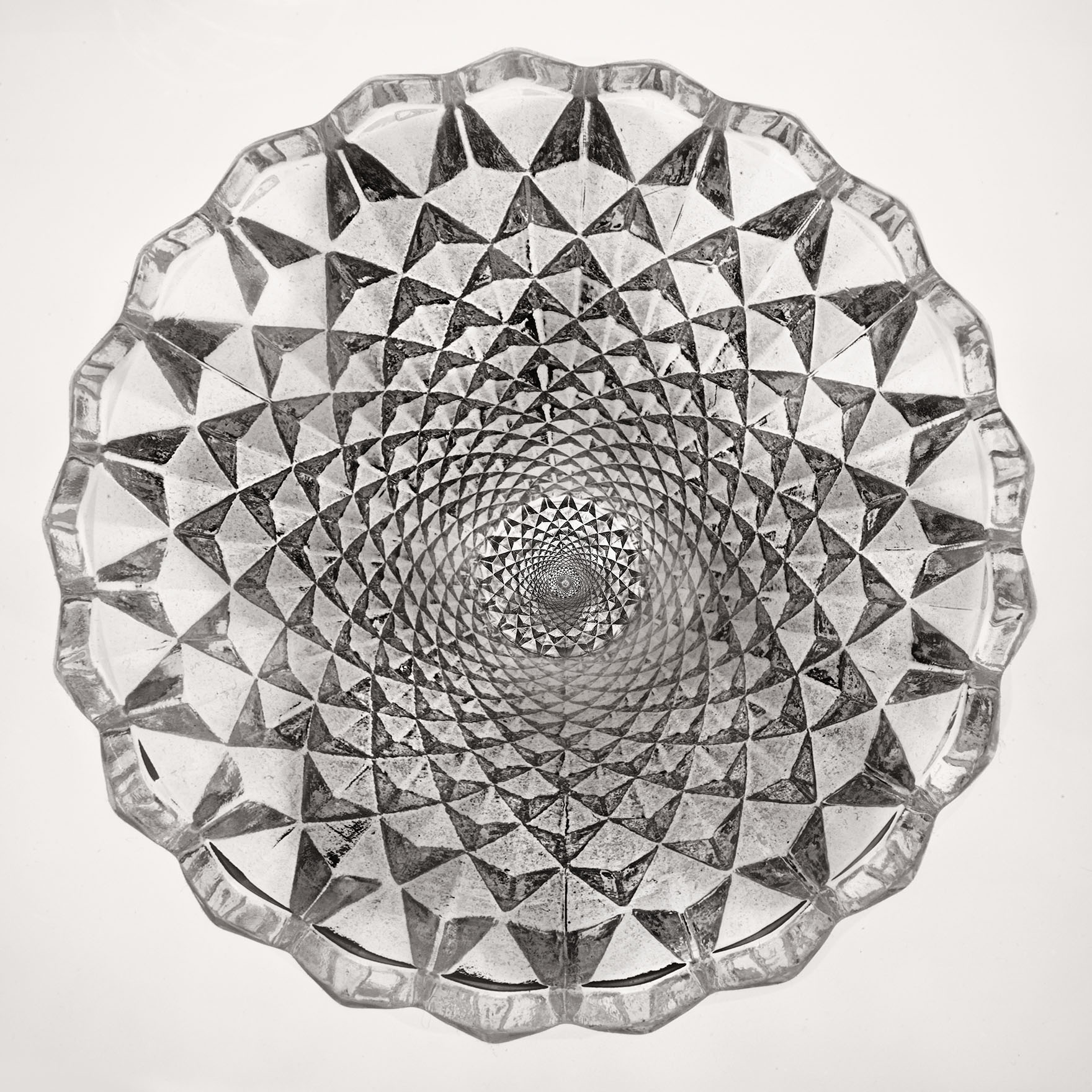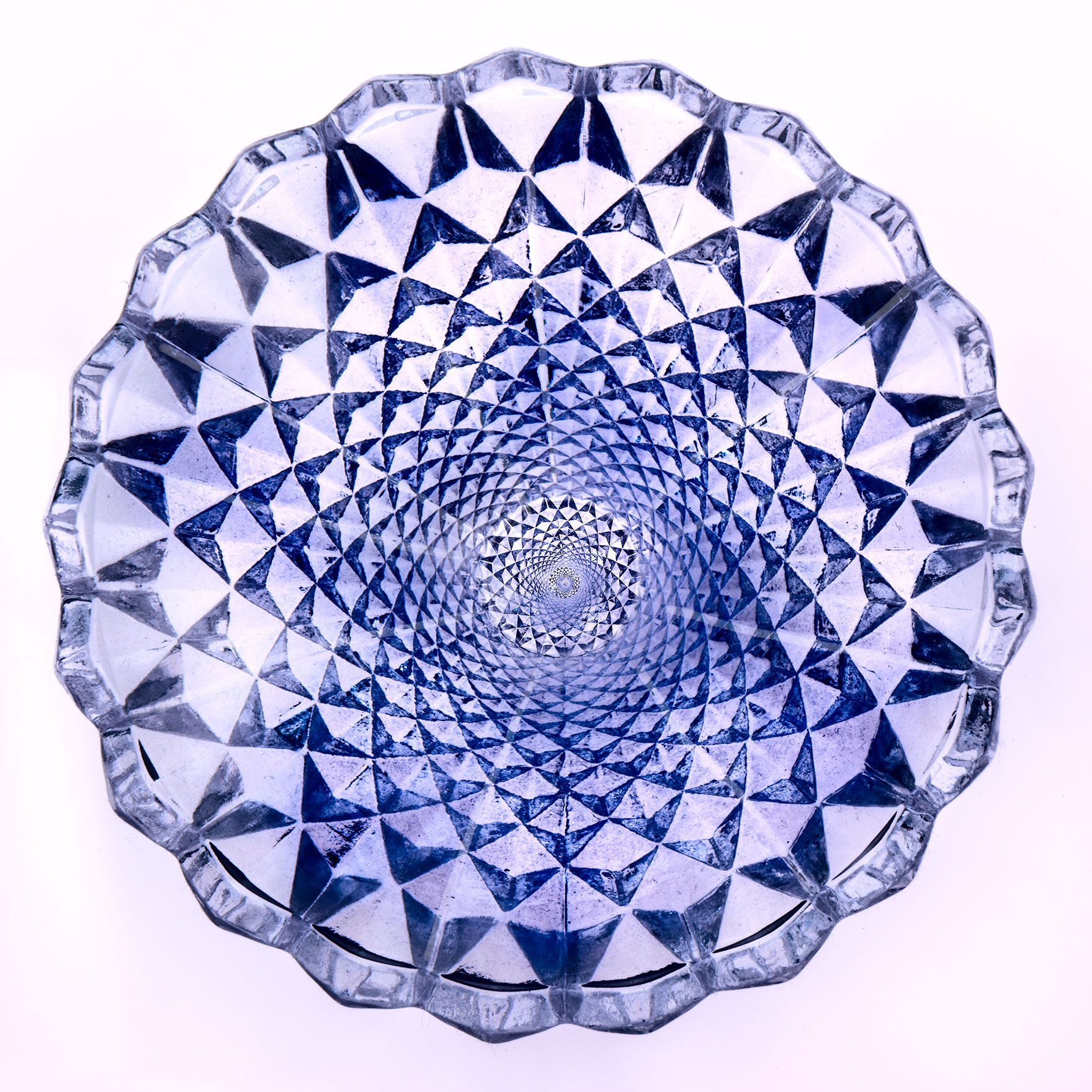Quantum entanglement is a physical phenomenon that occurs when a group of particles are generated, interact, or share spatial proximity in a way such that the quantum state of each particle of the group cannot be described independently of the state of the others, including when the particles are separated by a large distance. [Source: Wikipedia.] In other words, group interaction at a distance! With no apparent connection! Over vast distances! Explaining quantum entanglement using classical mechanics seems impossible, which has lead to the field of quantum mechanics.

The Quantum Entanglement series of images began as several frames photographed down on a light box from the inside of a parfait glass. I combined the frames (they were different exposures), composited the result with itself several times, and made a number of round trips into the phantasmagorical LAB color space.

One thing worth noting about these images: there’s an optical illusion in the center, which appears to be an almost lenticular trompe l’oeil effect. This is particularly noticeable in an enlarged version of Quantum Entanglement 2.

Pingback: Harold Davis—Best of 2022